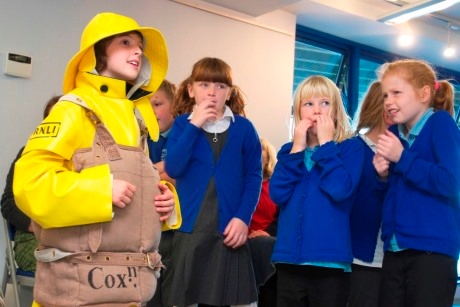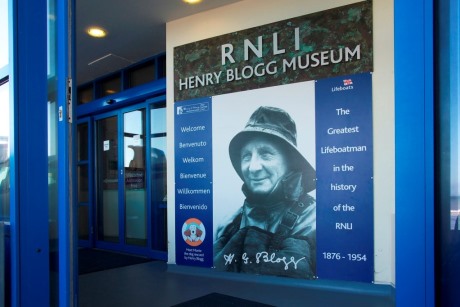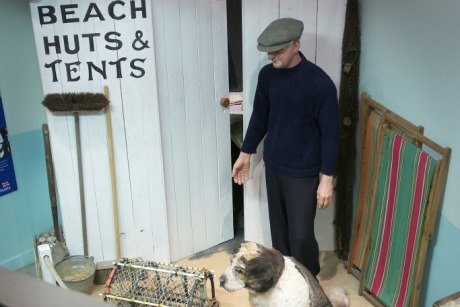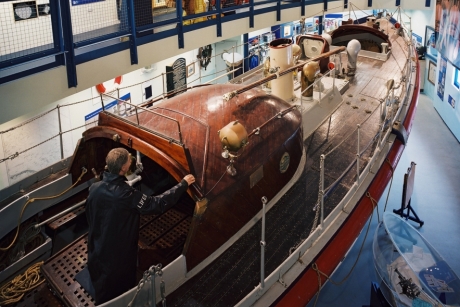
School Travel Organiser discovers that sometimes it’s the little places in life that make for brilliant learning outside the classroom opportunities.
The Henry Blogg Museum in Norfolk is a moderately small museum that celebrates both the Royal National Lifeboat Institution (RNLI) in Cromer, and the life of national hero Henry Blogg.
Blogg was a lifeboat man who served for 53 years on Cromer's lifeboats, saving 873 lives from the North Sea in his time working as a coxswain for the RNLI.
The museum illustrates the history of Cromer's lifeboats and tells the story of Henry Blogg's most famous rescues. Both subjects can be complemented with educational workshops for pupils aged four to 11.
A typical visit to The Henry Blogg Museum involves pupils taking part in a workshop of their choice, followed by exploring the museum.
What can pupils learn?
There is only one member of staff on site, and a handful of volunteers that develops and delivers a number of activities for schools.
There’s lots to choose from though; teachers who are planning a visit to the museum can expect plenty of educational links during workshops that cater for Key Stage 1 and 2 pupils in the subjects of History, Literacy, Drama and Science.

A collection of led sessions include acting out a life boat rescue for Drama, and learning about the characteristics of a good lifeboat in a study of materials during a Science workshop.
In addition to the workshops, children will explore the Henry Blogg Museum, enjoy dressing up in life boat kits from the past and present, and discover the practicalities of staying safe and warm while out at sea.
Literacy
Monte the Dog is a workshop suitable for younger students aged between four and seven learning Literacy. This is a 25 minute storytelling session about the rescue of Henry Blogg’s faithful canine companion.
Children will interact in this workshop by acting out the drama of the rescue, followed by hunting for evidence linked to the story throughout the museum.
Science
Students aged between seven and nine can take part in the Naval Architect Challenge workshop to learn about different materials.
This is made up of two 45 minute sessions, during which students will discover the characteristics of a good lifeboat by looking at the forces out at sea which affect a boat and what it’s made of.
With a bag of samples pupils will then scour the museum for items made of the sample material and have the opportunity to verbally explain how well it does its job. They will also experiment to find the best hull shape for a lifeboat.

Drama
Suitable for children aged seven to 11 is the Rescue to the Sepoy session, which is 35 minutes long and involves dressing up in Henry Blogg's flat cap to act out a rescue scene.
Pupils will be encouraged to cling onto the mast of the Sepoy and call to be rescued. This session aims to engage children with acting out different roles, as well as encourage them to empathise with the rescuers as well as the rescued.
A range of specially created activity suggestions, contemporary resources and original photographs are available to download prior to the Drama workshop. These supporting resources include a newspaper writing frame, a storyboard frame, and the phonetic alphabet.
History
Remembering the English Trader is suitable for pupils aged between eight and 11 and looks at a situation from Navy history which the students must rectify.
In this situation, the Merchant Navy ship English Trader is being pounded to pieces, while stranded on a sandbank in the North Sea. Students will have to answer questions such as: will coxswain Henry Blogg and the Cromer lifeboat crew be able to rescue the sailors in time? and how did the English Trader get into such a predicament?
Students are challenged to analyse and solve the problems of a rescue at sea during World War Two in this workshop, which lasts 45 minutes.

Lesson plan resources for History
A lesson plan spanning eight weeks is available to download in relation to the Remembering the English Trader workshop for teachers who would like to continue the study back in the classroom.
Wreck and Rescue in Wartime is a resource for education groups. Each lesson plan has a focused aim; for example, to find out how important convoys were in World War Two, or to solve the mystery of which ship rescued the crew of the SS Benvenue.
There is also a set of teacher’s notes for each lesson, plus two activities for pupils to partake in.
The online resources and museum programme are designed to support teachers of Key Stage 2 teaching a local history study and/or Britain since 1930, specifically the impact of World War Two.
The online resources also provide cross-curricular opportunities for Geography, English, Science, Mathematics and ICT. And they’re all free to download.
Plans for the future
The museum is currently developing a new session along with the Cromer Museum. The workshop will be based on the rescue of a family caught up in the Spanish Civil War, and is due to have National Curriculum links to Literacy as well as topical links to the Syrian migrant crisis.
For further information teachers should call 01263-511294 or visit www.rnli.org.










